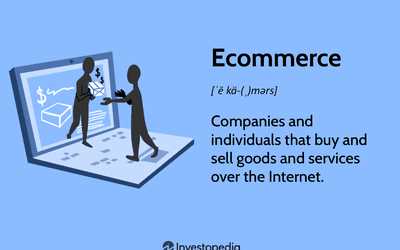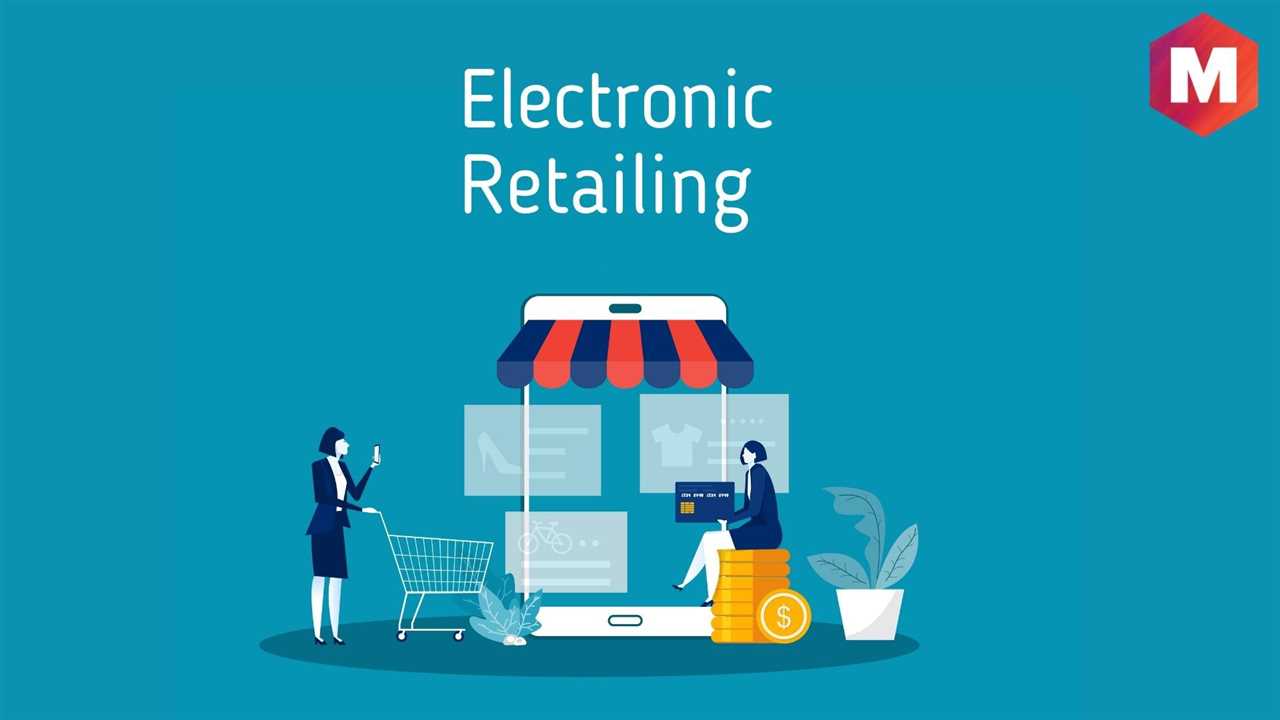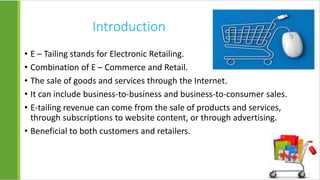What is Electronic Retailing (e-Tailing)?

E-tailing offers numerous benefits to both businesses and consumers. For businesses, it provides a cost-effective way to reach a global audience, reduce overhead costs, and streamline operations. It allows businesses to showcase their products and services online, provide detailed product information, and offer personalized shopping experiences.
For consumers, e-tailing offers convenience, flexibility, and a wide range of choices. It allows them to shop anytime and anywhere, compare prices and reviews, access a vast selection of products, and enjoy hassle-free shopping experiences. E-tailing also provides various payment options and secure transactions, ensuring a safe and seamless shopping process.
There are different types of e-tailing, including business-to-consumer (B2C), business-to-business (B2B), consumer-to-consumer (C2C), and consumer-to-business (C2B). B2C e-tailing involves businesses selling products and services directly to consumers, while B2B e-tailing involves businesses selling products and services to other businesses. C2C e-tailing involves individuals selling products and services to other individuals, and C2B e-tailing involves individuals selling products and services to businesses.
Examples of e-tailing platforms include popular online marketplaces such as Amazon, eBay, and Alibaba, as well as online retailers like Walmart, Best Buy, and Target. These platforms offer a wide range of products and services, from electronics and clothing to home goods and groceries. They provide a seamless shopping experience, with features such as product recommendations, customer reviews, and fast shipping options.
Definition, Types, Examples of Electronic Retailing (e-Tailing)
Types of e-Tailing

There are several types of e-Tailing, including:
1. Business-to-Consumer (B2C) e-Tailing: This type of e-Tailing involves businesses selling products and services directly to individual consumers. B2C e-Tailing platforms, such as Amazon and eBay, provide a wide range of products and services for customers to choose from.
2. Business-to-Business (B2B) e-Tailing: B2B e-Tailing focuses on businesses selling products and services to other businesses. This type of e-Tailing often involves bulk orders and long-term contracts. Examples of B2B e-Tailing platforms include Alibaba and ThomasNet.
3. Consumer-to-Consumer (C2C) e-Tailing: C2C e-Tailing enables individuals to sell products and services to other individuals through online platforms. Popular C2C e-Tailing websites include Craigslist and eBay, where individuals can list and sell their used items.
Examples of e-Tailing

Here are some examples of successful e-Tailing companies:
1. Amazon: Amazon is one of the largest e-Tailing companies in the world, offering a wide range of products, including electronics, books, and clothing. It provides a user-friendly interface and offers fast and reliable delivery options.
2. Alibaba: Alibaba is a B2B e-Tailing platform that connects businesses from around the world. It offers a variety of products, from electronics to machinery, and provides secure payment options and efficient shipping services.
3. Etsy: Etsy is a C2C e-Tailing platform that focuses on handmade and vintage products. It provides a platform for individual sellers to showcase their unique creations and connect with buyers who appreciate handmade items.
Overall, e-Tailing has revolutionized the retail industry by providing convenient and accessible shopping experiences for customers and opening up new opportunities for businesses to reach a global market.

Emily Bibb simplifies finance through bestselling books and articles, bridging complex concepts for everyday understanding. Engaging audiences via social media, she shares insights for financial success. Active in seminars and philanthropy, Bibb aims to create a more financially informed society, driven by her passion for empowering others.
